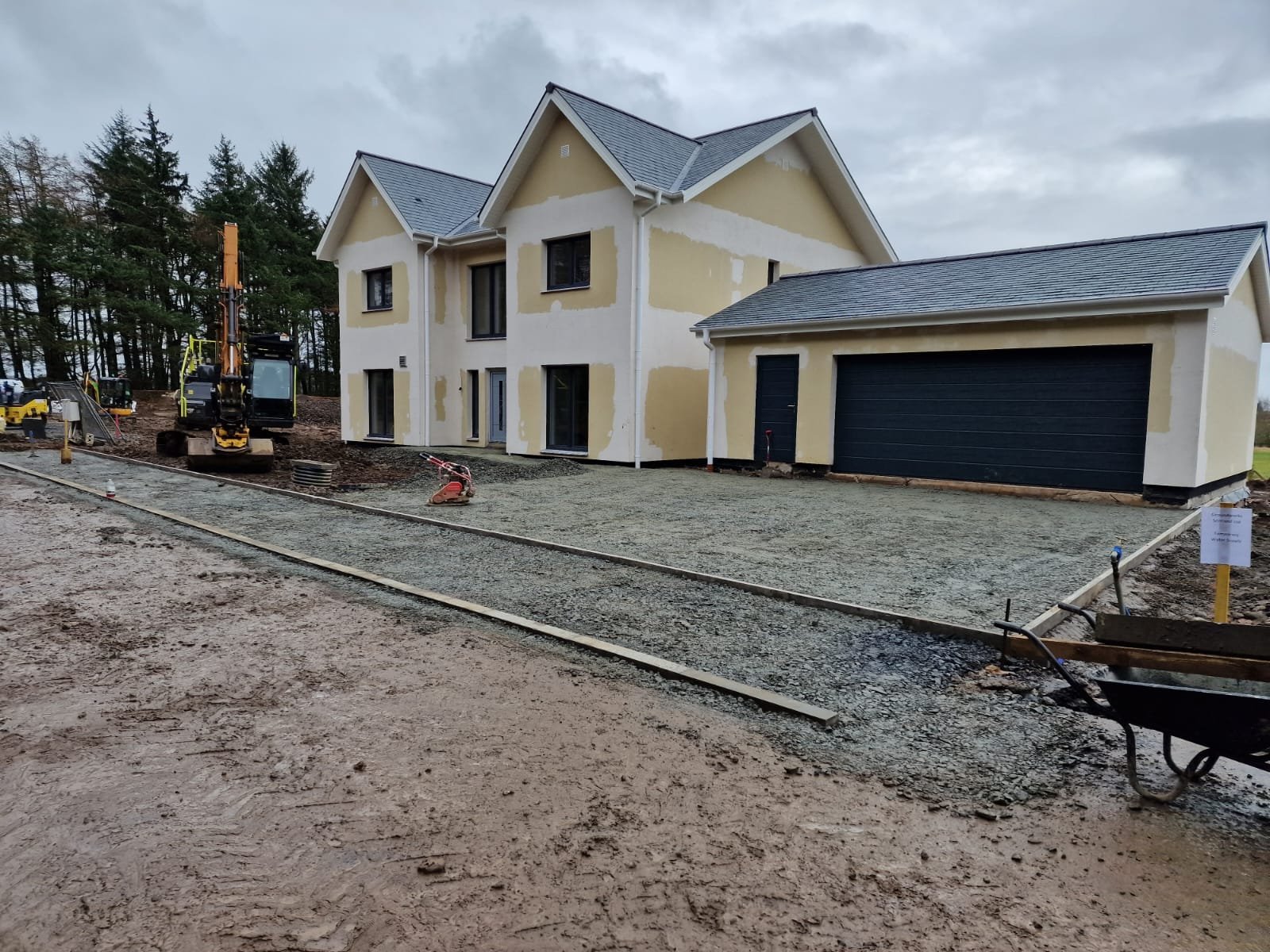
Custom & Self-Build Blog
Navigating the Challenges of Building Plots in the UK: Hidden Costs to Consider
Introduction
Embarking on a self-build project can be an exciting journey, allowing homeowners the opportunity to create their ideal space tailored to their needs. However, when it comes to purchasing a building plot in the UK, there are numerous potential difficulties that can significantly increase the cost of construction.
In this article, we explore some of the common challenges faced by self-builders and provide insights into hidden expenses that may arise.
1. Planning Permission
One of the first hurdles you'll encounter when building a house in the UK is obtaining planning permission. This process can be complex, time-consuming, and expensive. Local authorities will assess your proposal based on factors such as the design, location, and environmental impact of the proposed building. It is essential to budget for the cost of professional advice and planning application fees, as well as potential delays and additional costs if your application is rejected or requires amendments.
2. Site Accessibility
Limited access to your building plot can result in increased construction costs. Difficulties with site access can lead to complications in delivering materials and heavy machinery to the site, which in turn can lead to increased costs and extended construction timelines. You may also need to budget for the construction of temporary access roads or negotiate access rights with neighboring landowners.
3. Ground Conditions
Unstable or unsuitable ground conditions can have a significant impact on the cost of building a house. Issues such as weak soil, sloping land, or the presence of clay, peat, or rock can result in additional expenses for ground stabilization, excavation, and foundations. It is crucial to undertake a comprehensive site investigation and soil survey before purchasing a plot to identify any potential ground-related issues.
4. Utilities and Infrastructure
The availability of utilities, such as water, electricity, and gas, can significantly affect the cost of developing a building plot. If your chosen site is not already connected to these services, you may face substantial costs to extend existing connections or install new ones. Additionally, you may need to invest in drainage and sewerage systems, as well as any required infrastructure improvements, such as roadways or footpaths.
5. Environmental Constraints
Environmental constraints, such as flood risk, protected species, or tree preservation orders, can present challenges and additional costs when building a house. You may need to undertake specialist surveys, design adaptations to address environmental concerns, or even relocate the project to another site. It is crucial to investigate any potential environmental issues before purchasing a building plot.
6. Legal Considerations
Legal matters, such as land ownership disputes, restrictive covenants, or rights of way, can result in costly delays and complications when building a house. Ensure that you consult with a solicitor to identify and address any potential legal issues before purchasing a building plot.
7. Budget Overruns
When undertaking a self-build project, it is vital to maintain a contingency fund to cover unexpected expenses. Delays, unforeseen issues, and changes to the project scope can quickly lead to budget overruns, causing financial strain and potentially jeopardizing the success of the project. Always have a financial buffer in place to address any unexpected costs that may arise during construction.
Conclusion
Building a house on a plot of land in the UK can be a rewarding experience, but it is not without its challenges. By thoroughly investigating potential issues and hidden costs, self-builders can mitigate the risks associated with their projects and ensure a successful outcome. Be prepared to invest time and money in addressing planning permission, site accessibility, ground conditions, utilities, environmental constraints, legal considerations, and potential budget overruns to achieve your dream home.
Finding a building plot for a self-build or custom build new home
Finding a building plot in the UK for a self-build or custom build home can be a challenging process, but it is not impossible.
Here are some steps and tips to help you find a suitable plot:
Determine your requirements
Before starting your search, list your priorities and requirements, such as location, size, budget, and planning permission. Think about factors like access to transport links, schools, and local amenities.
Register with local authorities
Many local authorities have a register for people interested in self-build or custom build plots. Register your interest with the local authorities in the areas you're considering.
Online resources
Utilise online platforms dedicated to self-build plots, such as Plotfinder (plotfinder.net), PlotBrowser (plotbrowser.com), and UK Land Directory (uklanddirectory.org.uk). These websites list available plots and provide information on planning permission, size, and location.
Estate agents and land agents
Contact local estate agents and land agents, who may have information on plots not listed online. Make sure they're aware of your requirements and preferences.
Network with locals
Networking with local residents, builders, and architects can help uncover potential plots that are not advertised. Join local online forums and attend community meetings to establish contacts and gather information.
Land auctions
Attend land auctions, which can be a good source of building plots. Auction houses such as Allsop, Savills, and BidX1 frequently list land for sale. Make sure to research the plot and any planning restrictions before bidding.
Monitor planning applications submitted to local authorities. You can find information about new applications on local authority websites or by subscribing to their planning alerts. Look for plots with expired or lapsed planning permissions, as the owners may be willing to sell.
Brownfield sites
Brownfield sites are previously developed land that is no longer in use. These sites can be suitable for self-build projects, and local authorities often have a register of brownfield sites.
Land promotion companies
Land promotion companies buy land and obtain planning permission to sell it to developers or individuals. They can be a useful source of building plots, though they may be more expensive.
Be proactive
Be prepared to think outside the box and investigate unconventional opportunities. You might find a plot by exploring areas you're interested in or even by approaching landowners directly.
Remember that patience and persistence are key.
It may take time to find the perfect self build plot, but with determination and a thorough search, you can find a suitable location for your self-build or custom build home in the UK.
